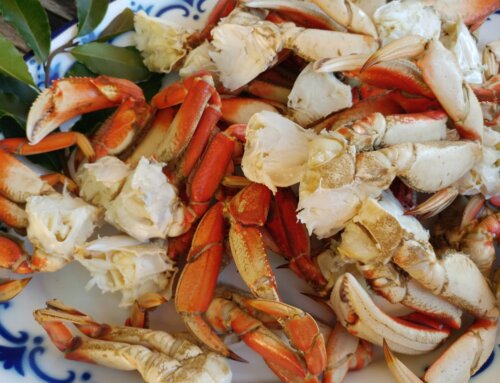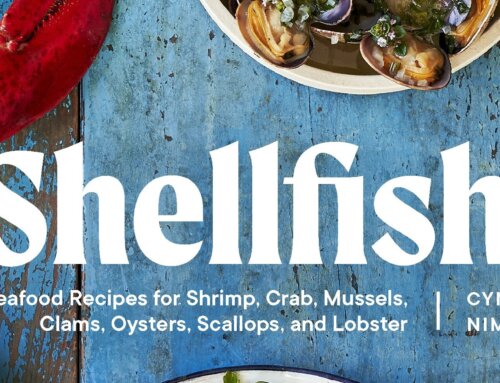They say that the proof is in the pudding. And I say it’s also in the skillet-roasted chicken, the green gazpacho, the risotto with asparagus and peas, the braised lamb shanks with olives and the hazelnut soufflé.
The proof I’m talking about is how well the recipe does its job. Preparation steps and cooking techniques all clearly spelled out? Ingredients all accounted for and in order? Cooking times accurate, descriptions of what “done” means easy to understand, the final product delicious?
Ultimately it’s about how dependable the recipe is. This is one of the key tasks in the work I’ve been doing for over 15 years. Making sure that when I sign off on a recipe and it goes out to the world, that everyone who uses that recipes stands a fighting chance of having good results.
I hate the image of a reader in his/her kitchen having just dutifully followed every step carefully and meeting with some less-than-delicious or -successful outcome, who thinks to themself that they must have done something wrong. Too often, it’s the recipe that did something wrong. My hope is to be the source of that scenario of frustration as seldom as possible. It’s why I test recipes like mad to work out as many kinks as possible before they get in anyone else’s hands.
Having just done some math in my head (oh…okay, I admit I used a calculator), there are about 1000 recipes in the eleven cookbooks I’ve written and/or tested recipes for in the past dozen or so years. Some recipes were my own (my Northwest Homegrown series), many of them collected from a few hundred different restaurants (five Best Places cookbooks), two came from working in close collaboration with a co-author (Rover’s and Memorable Recipes
). That number doesn’t count multiple tests of a single recipe, nor the many dozens that were tested but didn’t make the final cut. I’d say that easily doubles (maybe even triples) the figure. Lots and lots of recipe testing.
Recipe testing is one of the most important skills that was packed in my tool kit when I came home from my time at La Varenne in France. I had the phenomenal good fortune of having picked a culinary school whose owner, Anne Willan, was (and still is) a prolific cookbook author. As part of my editorial stagiaire (like internship) duties, I helped with a number of cookbook
projects doing recipe research, writing….and testing. I learned that–done right–testing is a really detailed process that takes a lot of careful attention and note-taking. Every minute of sauteing/baking/reducing time is carefully monitored, descriptions of specific techniques scrutinized, tastes along the way to verify the flavors are building as desired. Careful testing cloaks the recipe in confidence of its reliability.
I am going to be on a recipe testing rampage for the next few months. In a near-future couple of posts, I’ll tell you more about the specific projects in question. In the mean time I just wanted to bend your ear about this behind-the-scenes part of the cookbook process that I figure most readers aren’t too aware of.
And I have a question. Do you ever stand in the kitchen in the midst of a recipe and hit a wall, whether it’s a technique not well described, an ingredient you don’t know how to approach, a piece of equipment you don’t have, an expectation by the author that isn’t reasonable in your home kitchen? I’d love to hear any of your recipe-frustration stories. To better understand the challenges that pop up in “real world” situations outside my own home kitchen. And to get a little bit better at making sure my own recipes avoid those pitfalls.




“I hate the image of a reader in his/her kitchen having just dutifully followed every step carefully and meeting with some less-than-delicious or -successful outcome, who thinks to themself that they must have done something wrong. Too often, it’s the recipe that did something wrong.”
This is something I hear often, and while I completely agree with you that recipes should be clear and well-tested, I don’t agree with this statement.
If you are the one in the kitchen and it’s your hands making the food, you–not the recipe–are responsible for the result. When I have so-called recipe disasters, it’s usually because I went ahead and followed the recipe against my better judgment: I knew I was doing something wrong, and I did it anyway because it said to on a piece of paper.
This is not to excuse bad recipes. But most recipes–let’s be honest–are written with bad or inexperienced cooks in mind. Bad or inexperienced cooks need to get better. They can do so with the guide of good recipes or bad (in my experience, the bad recipes make better teachers), but if they blame the recipe for their mistakes, they won’t improve.
So, yes, I’ve come to believe that the best recipes are the old-school ones that can be expressed in a few words but expect a certain level of competence. And I don’t think there’s anything snobbish about this: anyone, given the opportunity to practice, can learn to cook very well, well enough that a bad recipe can’t throw them off.